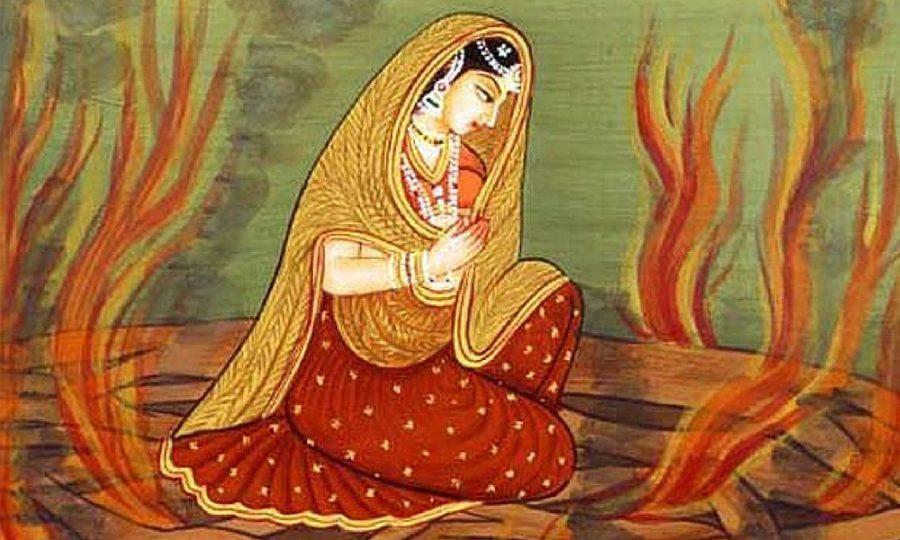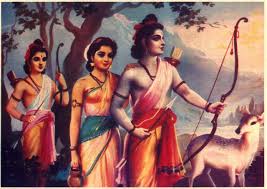Sita : Story And History About Daughter Of Janakpur Nepal
Sita Jayanti is celebrated every year on the day of Baisakh Shukla Navami. This day is also called Holy Navami. Hindus who believe in Vedic Sanatan Hinduism celebrate Sita’s birth anniversary as the main character of Ramayana and the center of Hindu faith. Born in the constellation Pushya, She is a great female example of Sanatan Darshan whose name is always mentioned. The story of Sita’s origin is told in detail in the Padma Purana and Bhavishyapurana (Sitanavami Vrat Mahatmya).

Sita
-Sita means in the Sanskrit dictionary, plowed by the plow fell on the ground, plowed land, plowed land is said to be a line formed on the ground.Different stories about Sita’s birth are found in Valmiki Ramayana, Anandaramayana, Adbhutaramayana, Adhyatmaramayana, Kambaramayana, (Tamil Ramayana) Goddess Bhagwat etc.
– According to other legends and proverbs Ramayana and Devi Bhagwat Purana, when he married Mandodari, the daughter of Vishwakarma (Maya), Ravana heard that the dynasty would be destroyed due to the first child, so he took the girl away and buried her in Janakpur.
– According to Adbhutaramayan, Ravana used to collect blood from sages as a tax. A sage always collected milk from the top of Kush in a jug. Ravana had filled that hour with as much milk as he had stolen. Mandodari drank the same milk mixed with blood for the purpose of suicide and became pregnant. She had buried this womb under the ground. King Janak found her while plowing.
– In the story of Ananda Ramayana, in the land of Mithila, a Brahmin found a maiden in a box and gave it to King Janak. Ravana had buried the box in Mithila. At the time of burial, Sita was cursing Ravana and saying, “I will come to Lanka again and destroy you and your family.”
– According to Kambaramayana, Vedavati, the daughter of Kushdhwaj, the brother of Shiradhwaj (Janak), was reduced to ashes in Agama due to Ravana and from the same ashes, Vedavati took the incarnation of Sita. According to this story, she appears to be the daughter of Kushdhwaj and Malavati.
– Tulasidas has shown that she originated from the earth in the character of Rama.
King Janak has called Sita ‘Mamatmaja’ my daughter in various places. Sitaji calls Urmila (Laxman’s wife) Anuja. Anuja means – ‘Paschajjayat Iti’ which originated from the back.
In the Tretayuga, King Janak of Mithila kept a bow for his daughter Sita’s Swayamvara. The marriage of Rama and Shita was consummated on the day of Margashirsha Shukla Panchami after breaking the bow of Shiva.

Sita, who grew up in Sukhsayal, has to live in exile with her husband and even in Lanka under Ravan. There are exemplary ups and downs in Sita’s life, her every word and decision has taught mankind wisdom and tolerance.
Sita’s depiction shows both radiance and strength. Swami Vikekananda has clearly said that there may or may not be many Rams in the future or in the past, but Sita is and will be the only one. Sita is named before Ram, so we hear Sitaram’s name even before Ram Sita. Janaki temple in Janakpur, Nepal is adorned with glimpses of Ramayana.
The stories of unwavering Sita and Maryada Purushottam Ram are still heard in our homes. Sita is not only a woman, she is a devotee, she is a power and she is an example of women’s boundless patience, endurance and generosity. The world is always colored in the mamtashayala of Sita, the goddess of religion and sadhana.
Sita is a national icon of Nepal. Sita is said to be the daughter of King Janak. But she is not really the daughter of Janak. King Janak plowed the land with a golden plow to find a suitable place for the sacrifice and found it in the plow needle. According to the Puranas, she was born as Janak’s adopted daughter, she became Sita as she was born from Halo’s Siyo, she became Vaidehi as the daughter of Videha Raja and Lord Vishnu took the form of Rama to take the burden of the earth and took human life to help her in her work.
Sita is a national icon of Nepal. Shita is said to be the daughter of King Janak. But she is not really the daughter of Janak.
In the Treta era, in Janakpurdham, the capital of Mithila, while the late King Janak was plowing the Yajna land with a golden plow, on the day of Baishakh Shukla Navami in the spring, Mahamaya Bhagwati Shita appeared from the womb of the earth. After Sita was brought up in King Janak’s Rajprasad, Janaki passed away. King Janak had promised to marry Sita only to a heroic man who could carry a Pinak Shiva bow in his palace. Many heroic kings came to Swayambhara.

Everyone tried to raise a bow, wishing to marry Sita, but no one was able to do so. Finally, Shri Ram, the eldest son of King Dasharatha of Ayodhya in India, picked up the bow. Ram easily broke the bow that others could not lift and showed great prowess. In Sita Swayamvara, Sita put a garland on Rama. Rama took Sita as his wife. Sitaji himself is considered to be the incarnation of Lakshmi. Along with the incarnation of Ram Chandra, Shita was also born on this earth. Sita’s Ramayana is described in an important way.
Sitaji himself is considered to be the incarnation of Lakshmi. Along with the incarnation of Ram Chandra, Sita was also born on this earth.
Adarsh’s wife, Adarsh Mata, Adarsh Bhauju, Adarsh Buhari, Adarsh Maharani and overall, Sita Nepal is considered as a national icon. Due to her ideal, virtue, chastity, femininity, motherhood, compassionate personality, she is revered all over the world as Jagajjani. Sita is a bright and immortal star in the history of Nepali women. She has presented a model of all Hindu women’s behavior.

Sita
Adarsh’s wife, Adarsh Mata, Adarsh Bhauju, Adarsh Buhari, Adarsh Maharani and overall, Sita Nepal is considered as a national icon.
Due to the ideal of female character presented by Shita, her name is very high in the history of mankind because Sita did not send a lesson of virtue to women, she gave the example of a woman of good character. That is why Shita is a great national icon of Nepal. After some people raised negative things about Sita in Ayodhya, Rama abandoned Sita again and she stayed in the ashram of a sage. That is where Love and Kush were born. Shita is considered to be the ideal of a virtuous woman. The story of his disappearance in the lap of the earth is in the Ramayana
Balmiki Ashram : Religious, Mythological and Historical Site of Chitwan
Comment Here!